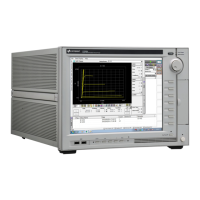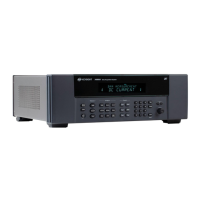5-2 Keysight B1505A Configuration and Connection Guide
Connection Guide for Wafer Prober and Your Own Test Fixture
This chapter describes how to make the measurement environment without using Keysight
N1259A or N1265A test fixture.
For extending the measurement terminals to a device under test (DUT), you need to
prepare connection cables, accessories, and your DUT interface such as wafer prober and
your own test fixture. Also you need to install the interlock circuit and make the openings
for the accessories on the shielding box of your DUT interface.
• "Connection Overview"
• "To Connect High Voltage R-Box"
• "To Connect HCSMU Adapter"
• "To Connect Dual HCSMU Adapter"
• "To Connect Protection Adapter"
• "To Connect High Voltage Bias Tee"
• "To Connect Module Selector"
• "To Connect HVSMU/HCSMU Fast Switch"
• "To Connect HVSMU Current Expander"
• "To Connect Ultra High Current Expander"
• "To Connect Ultra High Voltage Expander"
• "To Connect Device Capacitance Selector"
• "To Connect Gate Charge Adapter"
• "To Install an Interlock Circuit"
• "About Cable Connections"
For the dimensions of accessories, see Chapter 6,"Accessory Dimensions".
WARNING To avoid electrical shock and instrument damage, turn the all instruments off before
connecting or disconnecting measurement cable.
WARNING There are potentially hazardous voltages of up to ± 10 kV (UHVU), ± 3000 V
(HVSMU), ± 2200 V (HVMCU), ± 200 V (HPSMU), or ± 100 V (MPSMU) at the High,
Force, Guard, and Sense terminals. To prevent electrical shock, do not expose these
lines.
WARNING To prevent electrical shock during use, install an interlock circuit (see p. 5-47) and
connect the Interlock cable (see p. 5-49).
WARNING The B1505A, the N1265A ultra high current expander/fixture, and the N1268A ultra
high voltage expander are heavy and require a two person lift.
CAUTION Never connect the Guard terminal to any output, including circuit common, chassis
ground, or any other guard terminal. Connecting anything may damage the instrument.

